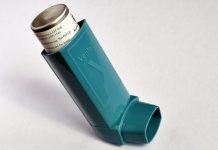The dust allergy or dust mites allergies are basically the response our immune system gives whenever microscopic bugs (i.e. the dust mites) enter our bodies. Since the dust bites are microscopic bugs, the house or the surroundings you are in can be dirty even though they seem to be perfectly clean. These extremely tiny creatures are a part of the spider family; and they feed on dead skin cells. They can live in most climates, at most altitudes and hence are one of the most common causes of asthma.
There are many symptoms of dust allergy which one should look out for. More information on the said symptoms, the causes and treatment of dust allergy are listed below.
Causes of Dust Allergy
Following are the most common causes of dust allergies:
- Exposure to high amounts of dust/ dust mites early on in life can be a trigger/ cause of dust allergies.
- People with family history of dust allergies are prone to develop and allergy as well.
Symptoms of Dust Allergy
The symptoms that an individual who has dust allergies will display are as listed below. These symptoms may range from being mild to being severe. They are:
- Itchy and/ or runny nose are both common symptoms of existence of dust mites.
- Congestion of the throat and of the chest is also included in the list of symptoms.
- Some patients even experience scratchy throat in addition to congestion.
- The dust allergy reactions also include red and itchy eyes. For other they may also have abnormally watery eyes.
- Development of some swelling or blue patches under the eyes is also considered to be symptoms of dust allergy.
- Build up of sinus pressure which may also lead to facial pain is also a common symptom.
- For some, the more severe symptoms include the feeling of tightness in the chest and also chest pains.
- Difficulty in breathing and/ or talking is also amongst the more severe symptoms of the condition.
- A dust allergy may also cause an individual to have a sudden attack of asthma. A severe asthmatic attack is also hence a symptom (as well as a consequence) of dust allergies.
- Coughing/ severe chronic coughing, sneezing, wheezing and shortness of breath are all symptoms of an underlying dust allergy in many patients.
Prevention of Dust Allergy
There are many ways in which you can prevent dust allergy or dust allergy attacks. The prevention methods are as follows:
- The first advice is to remove any wall to wall carpet in your surroundings. This is because carpets, no matter how clean, will probably capture a whole lot of dust.
- The next option if to keep you pets out of your immediate environment like your bedroom etc.
- Use of allergen proof linens and allergen proof clothes in general are also good ways of preventing dust allergies.
- Installing a high efficiency particulate air filter also helps in keeping dust mites at bay.
Besides these prevention methods there are also treatments like medications, allergy shots and certain other changes in one’s lifestyle. You can opt for any one or any combination of the above mentioned methods.














